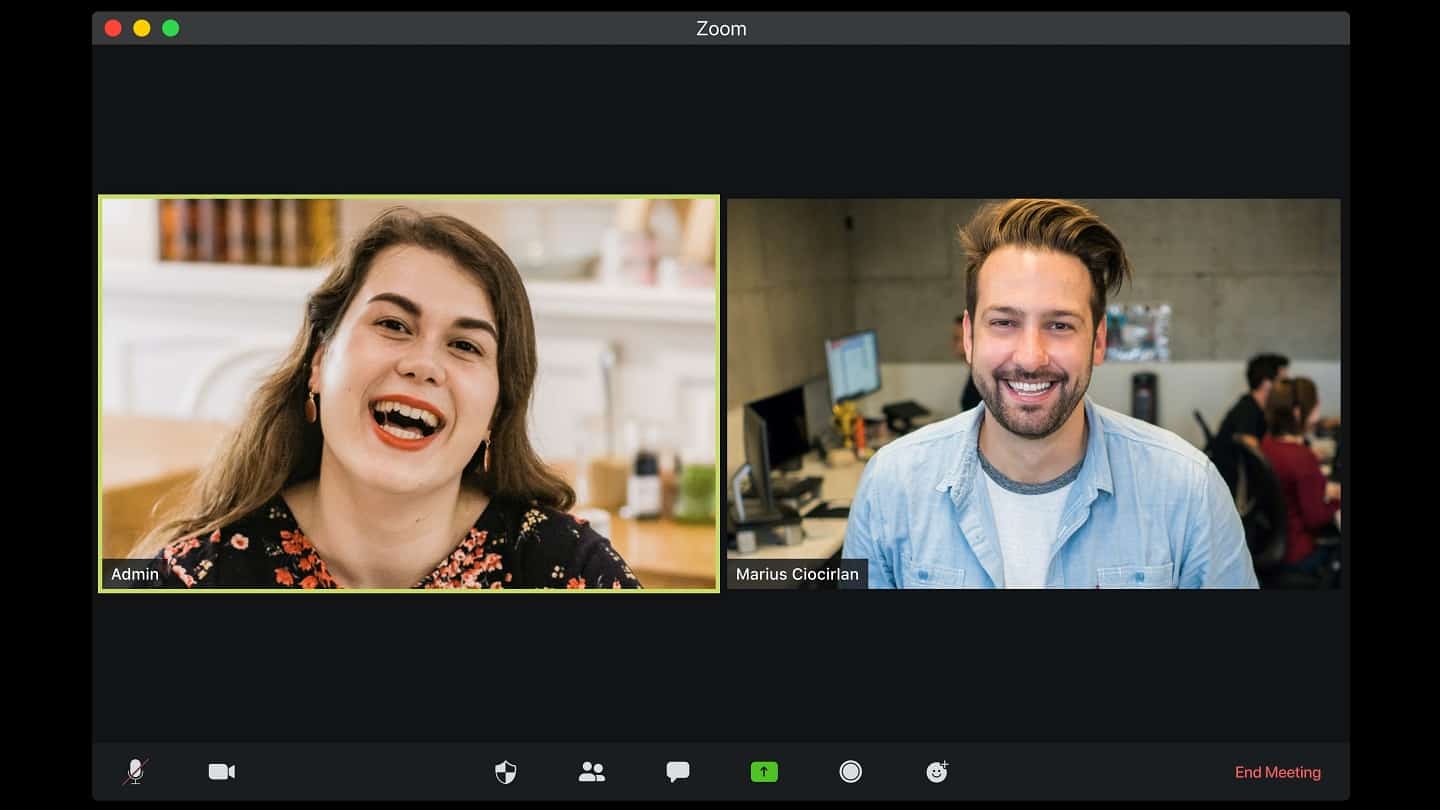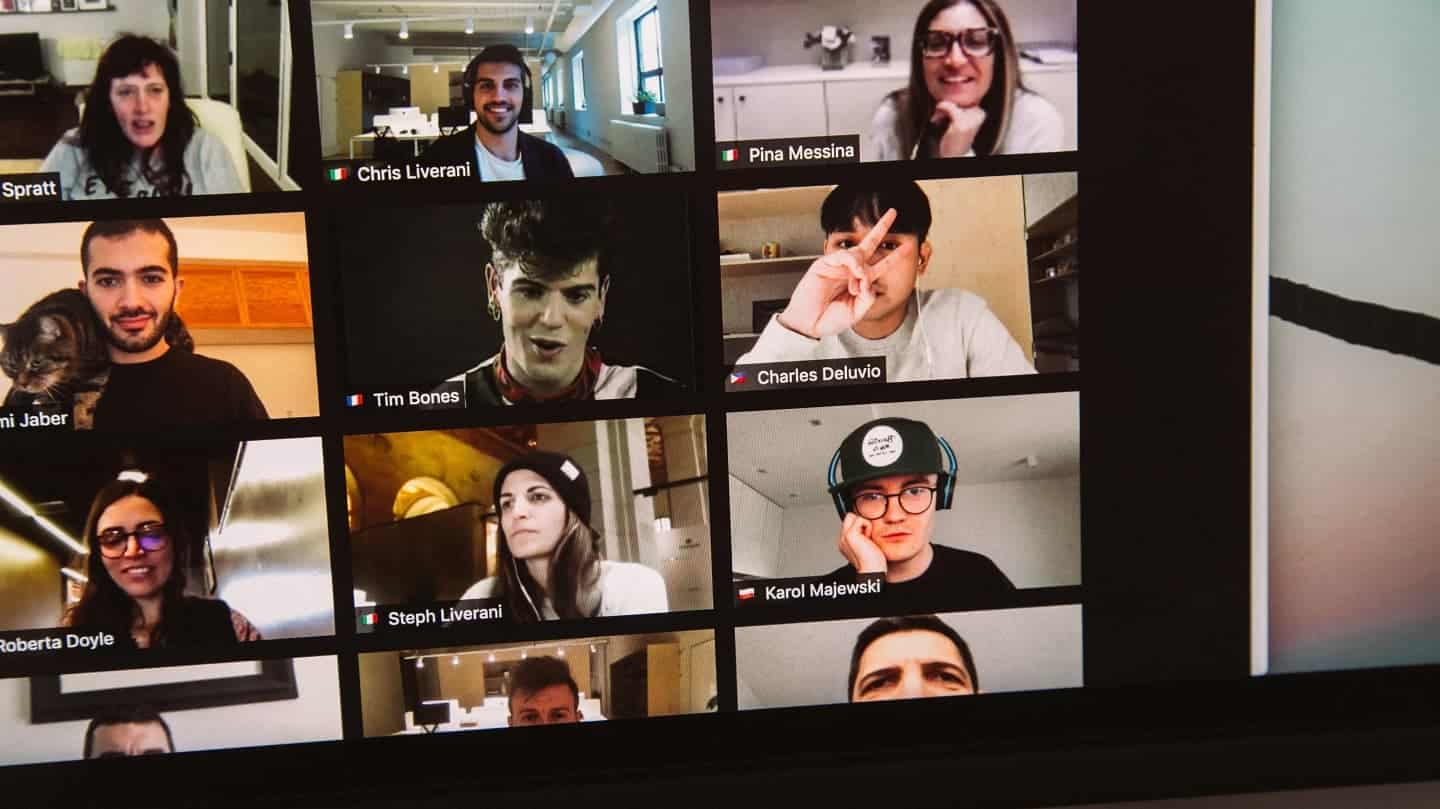The health crisis of 2020 has profoundly changed most commercial organisations. But if you work in sales, you are under even more pressure.
Indeed, virtual sales practices (such as video calls and demos) have become the norm. As a result, the performance, atmosphere and appearance of your video calls are under much greater scrutiny.
In this article, we present you with 8 best practices and tips to better sell at a distance and adapt your commercial strategy to the post-Covid-19 era.
Sommaire
#1 Don’t assume that your prospects know the platform you are using for the call

Although COVID-19 has standardised the use of video conferencing software, don’t make the mistake of assuming that the prospects you meet know how the platform you choose works.
So, before your scheduled meeting time, send a quick, personalised explainer video (an email can do the trick too) to your prospects, explaining how to use the platform in question.
This message can also be used to define the purpose and expectations of the meeting.
#2 Make it clear that video is not an option
For many people, appearing on camera during a video call is uncomfortable. Therefore, you may be reluctant to offer a video call. You should not be insensitive to the discomfort of the person in front of you, but you should still offer it.
When a camera is on, your conversion rate is about 10% higher. Think about the last meeting where someone turned off their camera. Did it really go well? Would it have gone better if it had been on? It most certainly would!
So you need to make it clear that video is not an option. If you don’t know how to do this, here’s an example of what you could say to your prospect in advance:
“For this meeting, it is essential that we both turn on our cameras. You need to see me clearly and get to know me. For my part, I need to see you, because what we are going to discuss is very important. And if you don’t understand what I’m explaining, I need to be able to see that too. Can you make sure your camera is on?”
#3 If you are meeting with several people, make sure you know who is who

Forgetting someone’s name during a video sale – or worse, getting it wrong – is not the best way to build a prospect’s confidence. So, if you meet with a group of people who are all in the same room, write down their names.
If you are worried about mixing them up, draw a map of the room on a piece of paper and write down their names according to where they are sitting. This way you can be sure you are not forgetting anyone.
#4 Smile!
Do you have a serious, stern face? Maybe you didn’t even know it until you watched your first video call on replay.
What you may not realise is that your face at rest is not always as pleasant as you think. And this is much more noticeable on video than face to face.
This is why you should always make every effort to smile (in a way that may sometimes not seem natural). Smiling will prevent you from rushing a prospect with an unintentional “killer” look.
But smiling is a psychological principle for selling that takes on a whole new importance in video: When you are face to face, a prospect sees your whole body, including your body language. When you are face to face, a prospect sees your whole body, including your body language, whereas in a video call, they only see your upper body.
This means that he sees no friendly posture or body language that might accompany a “serious face”.

#5 Face the light
You need to be facing your light source. Why? Because when someone is illuminated with a light source behind them, you cannot see their face.
So, before you receive your call, do a test to make sure you are facing your light source and that it does not blur you. It would be silly to present your product or service on video and the caller can’t see it.
Also consider checking the quality of your sound equipment. It is imperative that you are heard well, and that you hear well. The easiest way to ensure good sound quality is to avoid "ambient" speakers & microphones as much as possible.
Wear headphones or earphones if you do not have professional recording equipment.
#6 Stand up straight, even upright

No one is a great communicator when they are sitting, slouching and/or lying down on a video call.
Even if you use perfectly good sentences and express clear ideas, you will convey the wrong message about your professionalism and you will not be listened to as you would like.
Focus on your posture. We strongly recommend investing in a standing desk. If you can’t afford one, stack books and shoeboxes and stand up.
The standing posture brings considerable energy to video calls, a refreshing energy for your clients & prospects who, like you, are probably having video meeting after video meeting.
#7 Over-communicate
This is a key point in your video sales, especially if you are talking to a group of people.
Your prospects and meeting participants will be more involved in the discussion if you add their first name to your question / remark.
Communicating with them in this way will really include them in your business process.
In general, video calls do not allow as much to be conveyed as in vivo. It is therefore essential to communicate much more (at the risk of overdoing it) to ensure that everyone understands the same thing.
#8 This is your meeting
This is your meeting. If something distracts you, you need to correct it. If someone needs to be muted, mute them.
If your discussion goes off in all directions, quickly bring it back to where it should be. Of course, do this tactfully, you don’t want to lose anyone along the way.
If you do a good job with the whole meeting, you will probably have gained the confidence of your (future) client. It is important that the person in front of you feels good during your presentation, but it is equally important that YOU feel good.






